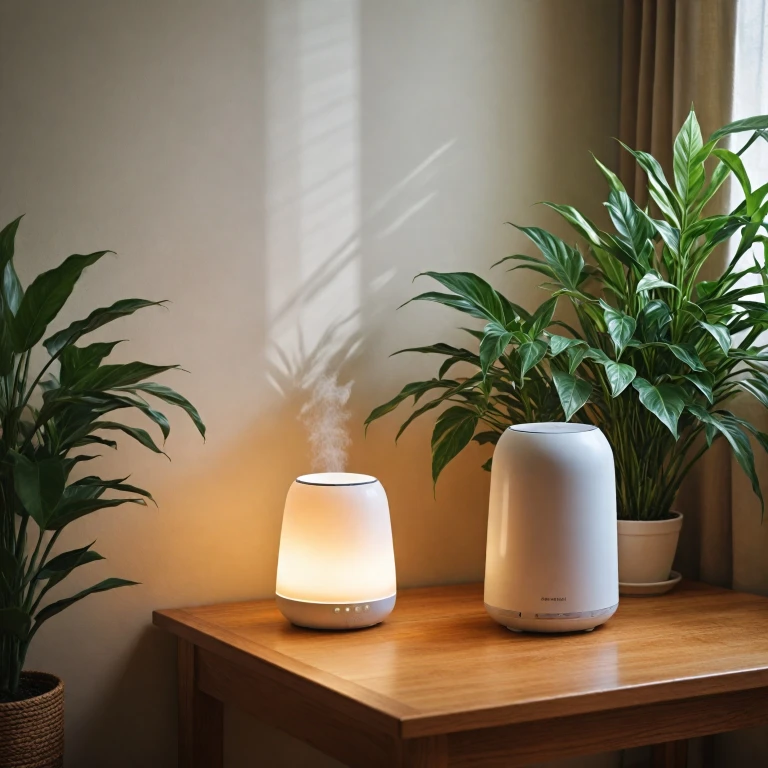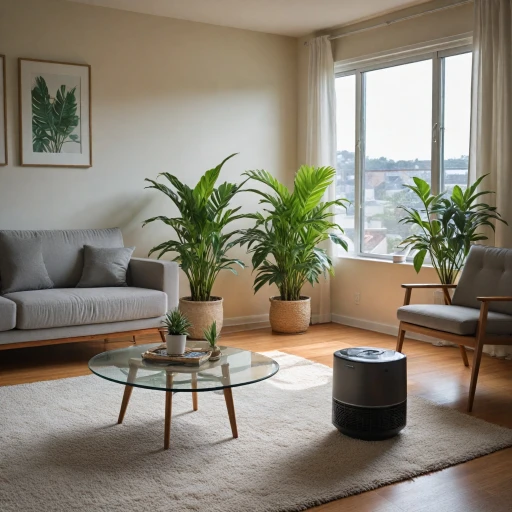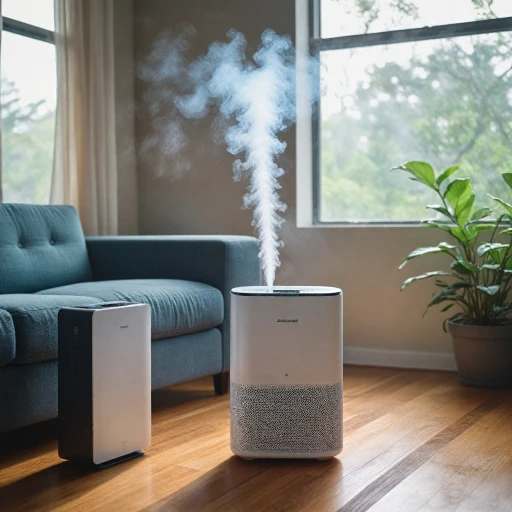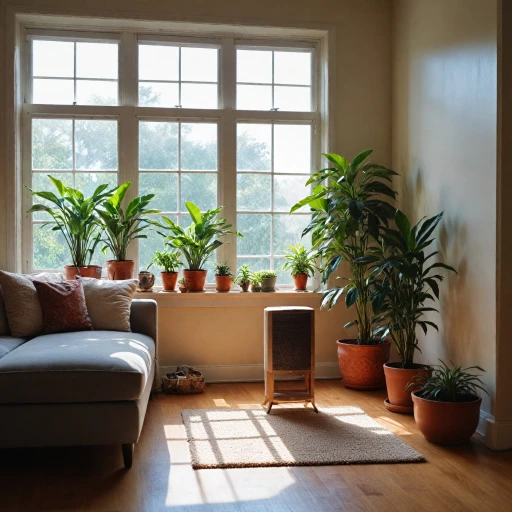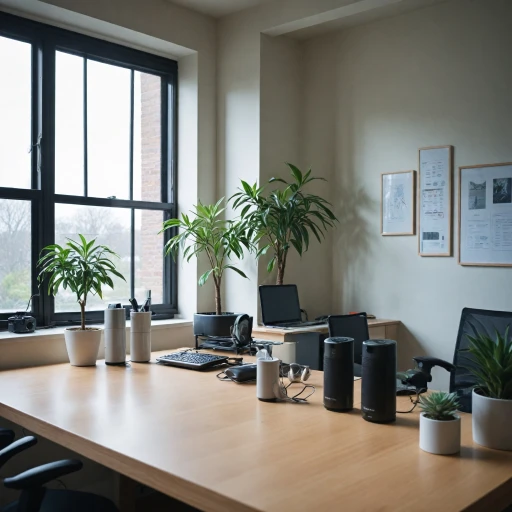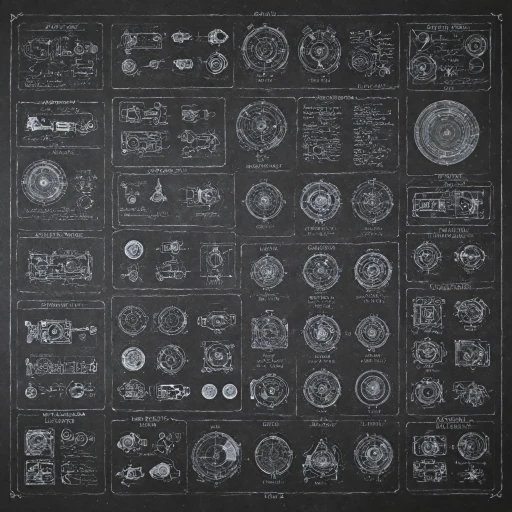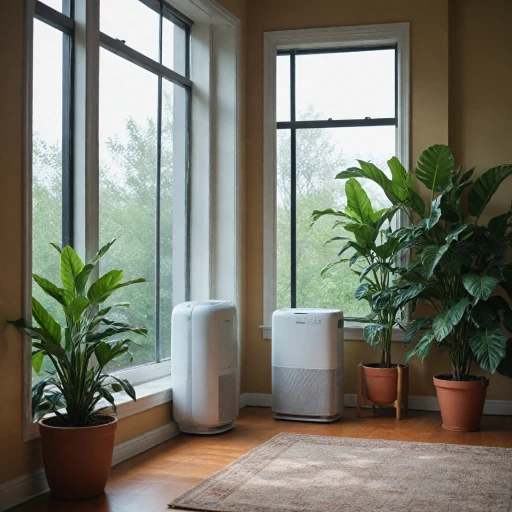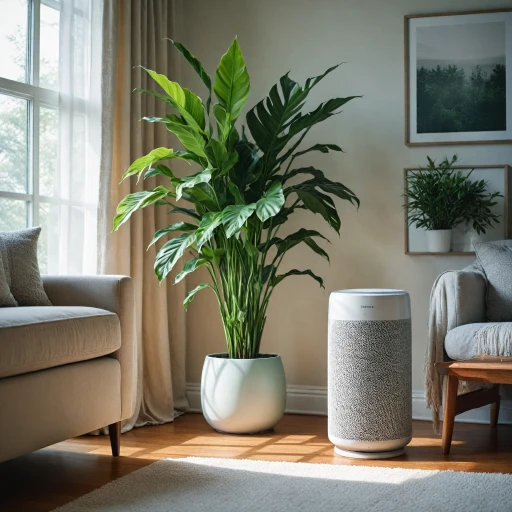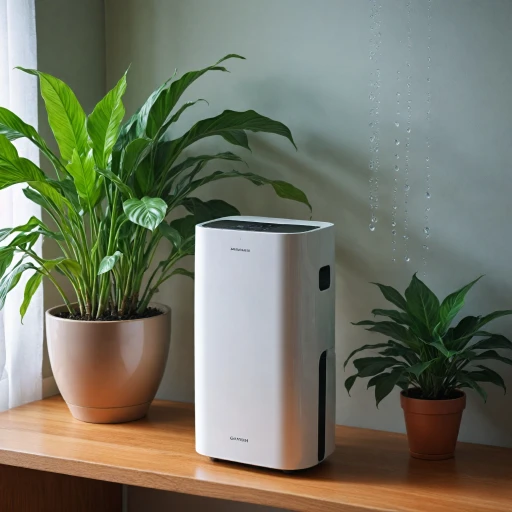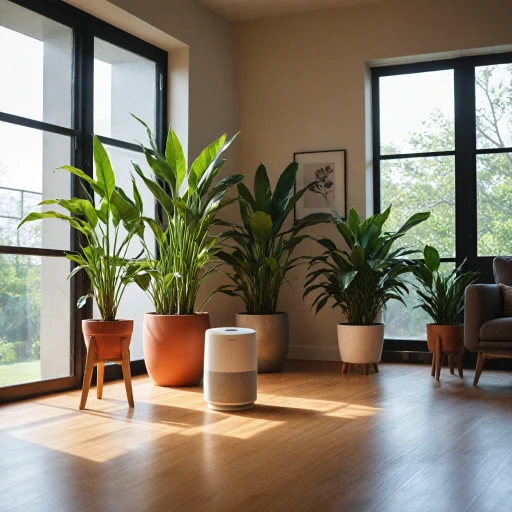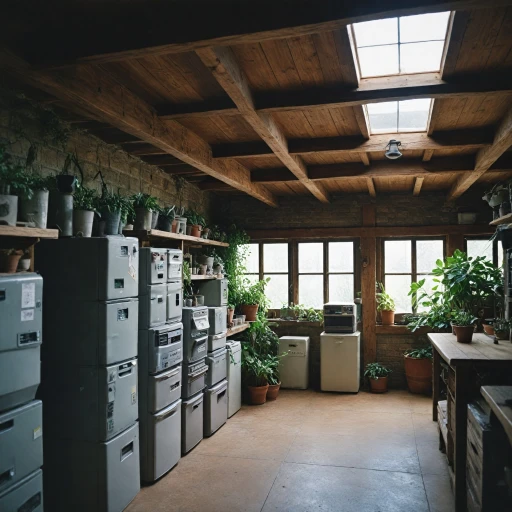Understanding Air Purifiers and Humidifiers
Overview of Air Quality Devices
When it comes to enhancing indoor air quality, both air purifiers and humidifiers play significant roles, each addressing different issues and requirements. To determine the right choice for your home, it's crucial to understand their functions and implications on air quality.
The Role of Air Purifiers
Air purifiers are designed to clean air by removing dust, pet dander, mold spores, and other airborne particles. They often come equipped with true HEPA filters, which are highly effective in capturing tiny particles as small as 0.3 microns. Some advanced purifiers also include activated carbon filters that help in reducing odors and capturing volatile organic compounds (VOCs). By eliminating pollutants and airborne particles, air purifiers significantly contribute to achieving clean and quality air indoors. For a detailed understanding of their advantages over dehumidifiers, you can explore more on their
differences here.
The Functionality of Humidifiers
Humidifiers, on the other hand, are devices intended to increase moisture in the air, providing relief from dry air conditions, particularly during colder months when indoor heating can strip moisture from the air. By adding moisture, humidifiers help alleviate symptoms of dry skin, sinus irritation, and respiratory discomfort. Although they do not filter dust or pollutants, maintaining optimal humidity can indirectly improve air quality by preventing the dryness that exacerbates airborne dust and allergens.
Ultimately, determining the best option requires considering the specific air quality challenges you face, whether it's battling dust pollutants with purifiers or improving moisture levels with humidifiers. Each device contributes uniquely to creating a healthier indoor environment.
Key Differences Between Air Purifiers and Humidifiers
Fundamental Differences in Functionality
Air purifiers and humidifiers serve distinct purposes when it comes to improving indoor air quality. An air purifier's main task is to trap and remove airborne particles like dust, pollen, and pet dander. They operate using various filters such as HEPA filters, which are highly effective at capturing fine pollutants, and activated carbon filters, which help eliminate odors and certain gases. In essence, air purifiers work to provide clean air by filtering out contaminants.
On the other hand, humidifiers add moisture to the air, fundamentally altering the air's humidity level. This function is particularly beneficial in environments where the air is dry, such as during winter months. Dry air can contribute to respiratory issues and skin dryness. By adding moisture, humidifiers help alleviate these conditions, creating a more comfortable living space.
Specific Air Quality Improvements
Air purifiers are designed to enhance overall air quality by removing dust, pollen, and other airborne pollutants. Some models even target specific problems, such as purifiers that can tackle volatile organic compounds or formaldehyde. Reviews often highlight their effectiveness in reducing allergy symptoms and improving air quality, especially in urban areas.
Conversely, humidifiers are not focused on removing particles but instead on balancing indoor moisture air levels. The quality air they deliver can also help preserve wooden furniture and flooring by maintaining a stable humidity range, preventing potential damage caused by dry air.
Considerations and Choice
Deciding whether to use an air purifier or a humidifier depends largely on current air conditions and individual needs. For those primarily concerned with removing airborne particles and pollutants, air purifiers are the preferred choice. Those experiencing discomfort from dry air will likely find humidifiers more beneficial.
To make an informed decision on purifiers versus humidifiers, one must assess the current state of indoor air and specific issues faced. In certain situations, investing in both may be the most comprehensive approach to achieve optimal air quality. For more information on making the right choice, consider this guide on
choosing between air dehumidifiers and air purifiers.
When to Use an Air Purifier
Optimal Situations for Air Purifier Use
Air purifiers are highly valued for their ability to remove airborne particles from indoor air, improving air quality and promoting a healthier living environment. While both air purifiers and humidifiers serve unique purposes, certain scenarios highlight the specific need for an air purifier.
- Dealing with Allergens: For those who suffer from allergies triggered by dust, pollen, or pet dander, air purifiers equipped with HEPA filters are especially beneficial. These filters trap and reduce airborne particles, helping alleviate allergy symptoms.
- Addressing Pollution: In areas with high levels of outdoor pollution, air purifiers help maintain clean indoor air. They work effectively by filtering out pollutants brought inside from the environment.
- Managing Odors: Activated carbon filters, often found in air purifiers, are adept at tackling strong odors, such as those from cooking or smoke. This makes them ideal for keeping your indoor air fresh and pleasant.
- Targeting Smoke: Whether from cigarettes or nearby wildfires, smoke particles can linger in the home. An air purifier with a HEPA air filter is instrumental in capturing these particles, enhancing the quality air you breathe.
- Enhancing Air in Pet-Friendly Homes: Pet owners often face additional indoor air contaminants in the form of dander. Investing in an air purifier can greatly help control and reduce these particles, making the environment more comfortable for both owner and pet.
To better understand how air purifiers play a critical role, especially in specialized environments such as dog grooming spaces, you might find it useful to
enhance air quality with this detailed guide. Emphasizing the importance of clean air becomes evident in various indoor scenarios, demonstrating the significant role air purifiers can play in maintaining healthy indoor spaces.
When to Use a Humidifier
Optimal Times to Turn to a Humidifier for Improved Air Conditions
Humidifiers can be invaluable additions to your home, particularly when humidity levels plunge, leaving the air uncomfortably dry. They work by adding moisture to the air, which can alleviate various issues associated with low humidity levels.
- Dry Indoor Air: During the colder months, or in naturally arid regions, heating systems can sap moisture from the indoor air, resulting in dry conditions. A humidifier helps restore balance by increasing the moisture level, which can have a soothing effect on skin, nose, and throat.
- Alleviating Respiratory Issues: If you or your family members suffer from colds, allergies, or asthma, a humidifier may help ease breathing by keeping nasal passages moist and reducing the presence of airborne dust and pollutants. The added moisture may also aid in reducing symptoms related to sinus congestion.
- Reducing Static Electricity: Ever notice how static electricity seems to increase in winter? Dry air is often to blame. By introducing additional moisture, a humidifier can minimize these unpleasant static shocks.
- Preserving Wooden Furnishings: Wood can crack or warp in dry conditions. An indoor air setup with balanced humidity levels, maintained by a humidifier, helps protect wood furniture and musical instruments, preserving their quality over time.
While humidifiers excel at adding moisture to dry environments, it’s essential to monitor humidity levels to prevent excess moisture accumulation, which can lead to mold growth or dust mite proliferation. Aim for a comfortable indoor humidity level between 30-50%.
Selecting between a humidifier and an air purifier will largely depend on your indoor air quality needs. While air purifiers focus on filtering pollutants and airborne particles, humidifiers are key tools in combatting dry air-induced discomfort. Understanding your unique home environment will assist in determining the best solution for you.
Factors to Consider When Choosing Between the Two
Considerations for Making the Right Choice
When deciding between an air purifier and a humidifier, there are key factors to keep in mind to ensure you enhance your indoor air quality effectively.
- Current Air Quality Needs: Evaluate whether your primary concern is removing airborne particles like dust, pollen, and pet dander or increasing moisture levels in dry air environments. If filtering pollutants such as dust, allergens, and other particles is a priority, focus on options like HEPA filters and activated carbon filters that can provide quality air. Conversely, if you need to add moisture to dry air, a humidifier might be your best bet.
- Room Environment and Conditions: Consider the room’s current conditions and identify issues such as low humidity or high levels of airborne pollutants. For rooms with good ventilation and low pollution levels, a humidifier may be sufficient to correct dry air issues. However, areas with indoor air concerns such as smoke, dust, or chemical pollutants might benefit more from a purifier that can effectively eliminate these problems.
- Health Considerations: Individuals with allergies, asthma, or respiratory issues may find more relief from air purifiers due to their ability to trap airborne pollutants and allergens. HEPA air purifiers equipped with true HEPA filters offer optimal results in ensuring cleaner air. Humidifiers, on the other hand, can help ease symptoms associated with dry skin, lips, and nasal passages.
- Budget and Maintenance: Assess your budget not only for the initial purchase but also for ongoing maintenance costs like filter changes and energy consumption. Air purifiers with HEPA and carbon filters require periodic replacement, impacting long-term expenses. Humidifiers may necessitate regular cleaning to prevent mold and bacteria growth.
- Combined Solutions: In some cases, the best solution may be a combination of both devices, particularly in scenarios where indoor air quality needs to be improved while also adding moisture air. Purifier humidifier combos are available, offering a two-in-one solution for maintaining ideal room conditions.
Ultimately, a careful assessment of your specific needs and conditions will guide you in choosing between purifiers humidifiers to achieve optimal clean air and comfort in your space.
Combining Air Purifiers and Humidifiers for Optimal Air Quality
Enhancing Indoor Air Quality with Combined Devices
Combining an air purifier and a humidifier in your home can significantly optimize indoor air quality, especially in environments dealing with multiple air quality issues. The duo works synergistically to tackle different elements that impair the air you breathe. Here's how you can benefit from this powerful combination:
- Holistic Air Management: Air purifiers with technologies like HEPA filters and activated carbon filters effectively capture airborne particles such as dust, pet dander, and pollutants. At the same time, humidifiers add moisture to the room, preventing dry air which can cause irritation or exacerbate respiratory conditions.
- Efficient Particle and Moisture Control: While purifiers are excellent at removing dust and allergens, humidifiers help alleviate dry air conditions often aggravated during colder months when heating is frequent. Maintaining proper moisture levels can also help reduce the suspension of pollutants and dust pollen in indoor air.
- Better Air Quality for Asthma and Allergy Sufferers: Clean air is vital for those with respiratory issues. Air purifiers help remove pet dander and particles that trigger allergies, while humidifiers ensure the air isn't too dry, which can cause discomfort and respiratory issues.
- Minimized Maintenance and Costs: Using a combination device—sometimes referred to as a purifier humidifier—can be both a space and cost-effective solution. Reviews suggest that these dual-functioning tools can simplify maintenance and eliminate the need for multiple devices.
To make the most out of using both an air purifier and a humidifier, consider factors like the size of your room, specific air quality needs, and whether you need to prioritize removing pollutants or adding moisture air. This approach ensures you're equipped with the right devices to maintain a comfortable and healthy living environment.
